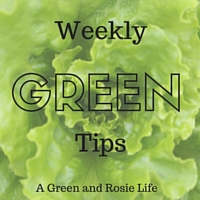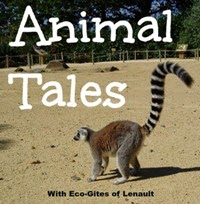Week 13 - 7 Best bee attracting plants
We need bees. It is not just honey that bees give us. As I mentioned in my Weekly Green Tips last week (7 beneficial garden bugs) bees pollinate over 30% of all our food stuffs and without them the future on mankind is believed to be at risk. As guardians of the open spaces we call gardeners, we therefore owe it to everyone to do our bit to help bee populations by planting a variety of plants they can feed from.
Bees can fly in cooler temperatures than other insects as they are able to generate their own body heat in some way, rather than having to rely on the warmth of the sun to get going. They can therefore be on the wing from early spring to late autumn so we need be growing plants that provide them food throughout the year. There are also different species of bees and their tongue length varies so growing different flowering plants to cater for both long and short-tongued species is important.
Generally bees prefer single native flowers rather than complex or non native ones flowers but they also adore wild flowers and weeds so leaving some wild areas in your garden in great for bees.
If you are thinking about growing plants that will best help bees the following list will serve our flying friends well - it offers food plans all through the year and caters for different species.
 |
| 2 bees feeding on a passion flower |
7 Best Bee Attracting Plants
1. Lavender
Bees love lavender but recent research has shown that not all lavenders are equal and some are more attractive to bees than others with Lavendula. x intermedia cultivar (‘Gros Bleu’) being top of the lavenders for bees. (1)
 |
| Bee on Lavender |
2. Plants in the borage family
Including viper's bugloss, borage and comfrey these are all adored by bees.
3. Herbs
Let some of your herbs go to flower and watch the bees flock to your garden - marjoram, oregano and chives are particular favourites. And here in Normandy, our sage is often visited by the wonderful black carpenter bee.
 |
| Black carpenter bee feeding on a sage flower |
4. Cotoneaster
When our tree cotoneaster is in flower in June/July the sound of the bees from within it can almost be deafening. They just can't get enough of their small flowers and the resulting berries are eaten by birds in winter.
5. Flowering Currant (Ribes)
This spring-flowering plant gives a good supply of valuable nectar early in the season for the first bees on the wing. If you plant some grape hyacinths (Muscari) around the base of the currant you'll be giving even more plants for hungry bees to feast on.
6. Sunflowers
Look carefully on the sunflower in my blog header and you'll see a bumble bee. Bees love these late summer flowering giants almost as much as children.
7. Clematis
Bees love climbing clematis flowers and by growing several species you can have your walls and fences covered in bee attracting pants from spring through to autumn.
Bonus bee attracting plant - Ivy
And just for you I have included a bonus plant - Ivy. You might not think of ivy as being a flowering plant but its insignificant flowers in late autumn are immensely valuable for bees on the wing late in autumn. Ivy provides the greater part of their diet as the year closes and the berries that follow are an important and rich foodstuff for overwintering birds. Ivy may have had some bad press in the past and many gardeners used to to remove it but now its wildlife value is being realised so please do consider growing some somewhere in your garden.
 |
| Ivy flower buds and berries - a wildlife paradise |
This is in no way an exhaustive list and there are hundreds of excellent plants that will help feed the bees so there really is no excuse not to help out these hard-working insect allies. Have you got flowers in your garden that bees love - please do add which ones in a comment.
1. ‘Quantifying variation among garden plants in attractiveness to bees and other flower-visiting insects’, Functional Ecology, (October 2013). Functional Ecology is a journal of the British Ecological Society.
Linking up with #NatureNotes at Rambling Woods and my own linky #AnimalTales






It is so important to attract bees into our gardens. I have most of the plants you mentioned. Thanks for an informative post.
ReplyDeleteMe too :)
DeleteOh I love Bee's and love the sound of buzzing in our garden. I try to have loads of bushes that attract bees and butterflies x
ReplyDeleteAt the moment my favourite is listening to bees buzzing up foxglove bells (another favourite of bees that I could have included)
DeleteWhat an interesting list. Pleased to see clematis on there as I have just planted one in my garden :)
ReplyDeleteExcellent - I hope it grows well as it is a plant I always seem to kill!
DeleteHello, I have a few of these plants. Clematis one of my favorites. Thanks for this great post and info. Happy Monday, enjoy your new week ahead!
ReplyDeleteThank you Eileen and hopefully now you might fit in a few more bee attracting plants.
DeleteI didn't know they were attracted to herbs, but it makes sense.
ReplyDeleteMy herb patch is so alive with bees once the herbs go to flower - I can watch them for ages!
DeleteI love watching bees in our garden, they're always so busy #AnimalTales
ReplyDeleteI didn't know about ivy - will keep an eye out for them on that as we have a little. We planted a lavender border down the side of our house and that is bee heaven. It's also easy to care for and looks and smells fantastic.
ReplyDeleteI'm so glad to have read this, not only because we've just planted sunflowers and lavander in our front borders, but also because in our French house we have a sage teeming with wildlife, including black bees, which I posted about recently. I didn't know they were called Carpenter Bees, so thank you for teaching me something new.#AnimalTales
ReplyDeleteA pleasure - they are one of my favourite bees
Deletei've got some lavender in the garden, but no idea if we actually get bees in Dubai
ReplyDeleteYou do apparently although some people seem intent in getting rid of them :( http://www.dubaisteam.com/bees_control.html
DeleteI love this post and so much good information for us to help pollinators...I will link into your linky next week if I can... Michelle
ReplyDeleteMy garden is mostly made up of lavender and sunflowers as they as the only things that survive under my care :) #animaltales
ReplyDeleteI have some of these as they attract butterflies too :) I didn't know what comfrey was until recently but notice there's a lot at the local allotments.
ReplyDelete